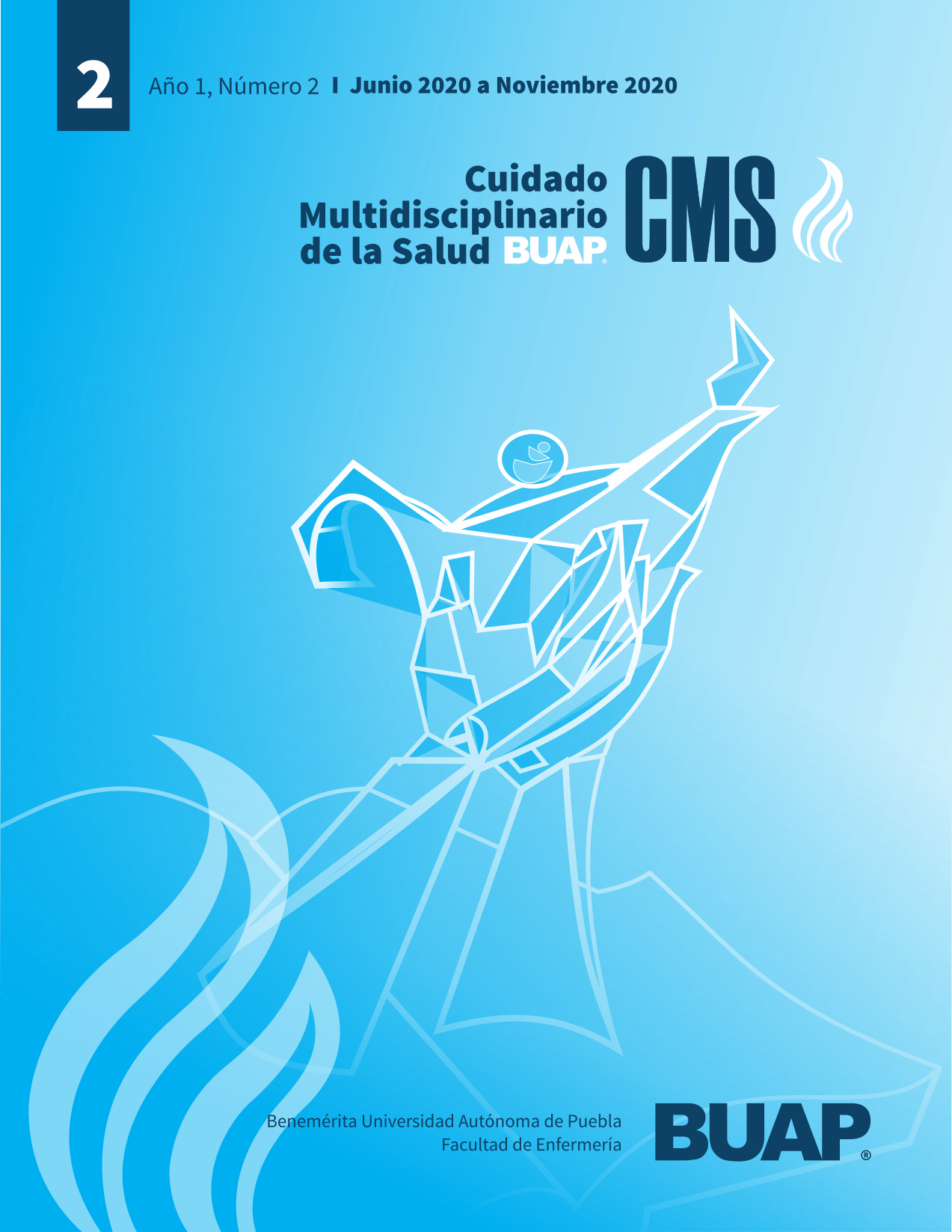Classificação sorológica do VHC no uso de drogas injetáveis: revisão de escopo
Palavras-chave:
Hepatite C, Usuários de Drogas, Conduta de Redução de Risco, (DeCS)Resumo
Introdução: As pessoas que utilizam drogas injetáveis estão num nível alto de risco de contrair o vírus da hepatite C, por isso é utilizada a classificação sorológica como estratégia na redução do risco. Se faz a revisão de escopo para identificar os elementos relacionados à classificação sorológica do vírus da hepatite C em pessoas que utilizam drogas injetáveis.
Material e Métodos: Se fez a pesquisa de artigos em PubMed, PsyINFO e na Web of Sciences, utilizando serosort*, serosorting e VHC, hepatite no título ou resumo deles, tanto escritos em inglês quanto em espanhol, e em população que utiliza drogas injetáveis. Não teve restrição de ano ou de desenho de estudo, e excluiu-se a literatura cinzenta.
Resultados: O estudo se baseou em 34 referências e quatro foram inclusas na síntese do conhecimento. Os elementos identificados para o processo de classificação sorológica foram: autoconhecimento do seroestado e revelação dele mesmo, raça/etnia, faixa etária, renda, nível educativo, situação de rua, situação laboral, faixa etária da primeira injeção, gênero e área geográfica (rural, urbana).
Conclusões: A classificação sorológica do vírus da hepatite C em pessoas que usam drogas injetáveis é um processo individual e interpessoal que inclui a decisão sobre o uso compartilhado das seringas, o qual precisa do conhecimento próprio dos usuários sobre o seu seroestado. Além, esse conhecimento se constrói por elementos socio-estruturais como a disponibilidade de serviços de detecção, tratamento e cuidado do vírus da hepatite C.
Referências
Burt, R. D., Thiede, H., & Hagan, H. (2009). Serosorting for hepatitis C status in the sharing of injection equipment among Seattle area injection drug users. Drug and Alcohol Dependence, 105(3), 215–220. Doi: https://psycnet.apa.org/doi/10.1016/j.drugalcdep.2009.07.005
Center for Disease Control and Prevention. (s/f). Hepatitis C Questions and Answers for Health Professionals. Recuperado el 18 de mayo de 2019, de: https://www.cdc.gov/hepatitis/hcv/hcvfaq.htm#section1
Degenhardt, L., Peacock, A., Colledge, S., Leung, J., Grebely, J., Vickerman, P., … Larney, S. (2017). Global prevalence of injecting drug use and sociodemographic characteristics and prevalence of HIV, HBV, and HCV in people who inject drugs: a multistage systematic review. The Lancet Global Health, 5(12), e1192–e1207. Doi: https://doi.org/10.1016/S2214-109X(17)30375-3
Duncan, I., Curtis, R., Reyes, J. C., Abadie, R., Khan, B., & Dombrowski, K. (2017). Hepatitis C serosorting among people who inject drugs in rural Puerto Rico. Preventive Medicine Reports, 6, 38–43. Doi: https://doi.org/10.1016/j.pmedr.2017.02.001
Duncan, I., Habecker, P., Hautala, D., Khan, B., & Dombrowski, K. (2018). Injection-related hepatitis C serosorting behaviors among people who inject drugs: An urban/rural comparison. Journal of Ethnicity in Substance Abuse, 1–16. Doi: https://doi.org/10.1080/15332640.2018.1425950
Eaton, L. A., Kalichman, S. C., Cain, D. N., Cherry, C., Stearns, H. L., Amaral, C. M., … Pope, H. L. (2007). Serosorting sexual partners and risk for HIV among men who have sex with men. Seroclasificación del VHC en el uso de drogas inyectables: Revisión de alcance. American Journal of Preventive Medicine, 33(6), 479–485. Doi: https://doi.org/10.1016/j.amepre.2007.08.004
Elsevier. (s/f). Mendeley. Version 1.13.8. Hotton, A. L., Gratzer, B., & Mehta, S. D. (2012). Association between serosorting and bacterial sexually transmitted infection among HIV-negative men who have sex with men at an urban Lesbian, gay, bisexual, and transgender health center. Sexually Transmitted Diseases, 39(12), 959–964. Doi: 10.1097/OLQ.0b013e31826e870d
Kerr, T., Mitra, S., Kennedy, M. C., & McNeil, R. (2017). Supervised injection facilities in Canada: past, present, and future. Harm Reduction Journal, 14(1), 28. Doi: https://doi.org/10.1186/s12954- 017-0154-1
Kim, A. Y., & Page, K. (2013). Hepatitis C virus serosorting in people who inject drugs: sorting out the details. The Journal of Infectious Diseases, 208(12), 1929–1931. Doi: https://doi.org/10.1093/ infdis/jit526
Osmond, D. H., Pollack, L. M., Paul, J. P., & Catania, J. A. (2007). Changes in prevalence of HIV infection and sexual risk behavior in men who have sex with men in San Francisco: 1997–2002. American Journal of Public Health, 97(9), 1677–1683. Doi: https://doi.org/10.2105/AJPH.2005.062851
Peters, M. D. J., Godfrey, C. M., Khalil, H., McInerney, P., Parker, D., & Soares, C. B. (2015). Guidance for conducting systematic scoping reviews. International Journal of Evidence-Based Healthcare, 13(3), 141–146. Doi: 10.1097/XEB.0000000000000050
Purcell, D. W., Higa, D., Mizuno, Y., & Lyles, C. (2017). Quantifying the harms and benefits from serosorting among HIV-negative gay and bisexual men: A systematic review and meta-analysis. AIDS and Behavior, 21(10), 2835–2843. Doi: https://doi.org/10.1007/s10461-017-1800-z
Smith, B. D., Jewett, A., Burt, R. D., Zibbell, J. E., Yartel, A. K., & DiNenno, E. (2013). “To share or not to share?” Serosorting by hepatitis C status in the sharing of drug injection equipment among NHBS-IDU2 participants. The Journal of Infectious Diseases, 208(12), 1934–1942. Doi: https:// doi.org/10.1093/infdis/jit520
Surkan, P. J., Li, Y., Jacobson, L. P., Cox, C., Silvestre, A., Gorbach, P., … Plankey, M. (2017). Unsafe sexual behavior among gay/bisexual men in the era of combination antiretroviral therapy (cART). AIDS and Behavior, 21(10), 2874–2885. Doi: https://doi.org/10.1007/s10461-016-1614-4
The Joint United Nations Programme on HIV and AIDS (UNAIDS). (2018). Key population groups, including gay men and other men who have sex with men, sex workers, transgender people and people who inject drugs. Recuperado el 25 de octubre de 2018, de: http://www.unaids. org/en/topic/key-populations
Wilson, D. P., Regan, D. G., Heymer, K. J., Jin, F., Prestage, G. P., & Grulich, A. E. (2010). Serosorting may increase the risk of HIV acquisition among men who have sex with men. Sexually Transmitted Diseases, 37(1), 13–17. doi: 10.1097/OLQ.0b013e3181b35549
World Health Organization. (2016). People who inject drugs. Recuperado el 18 de mayo de 2019, de https://www.who.int/hiv/topics/idu/about/en/
Downloads
Publicado
Como Citar
Edição
Seção
Licença
Los derechos morales pertenecen al autor, los derechos patrimoniales a la Benemérita Universidad Autónoma de Puebla.






